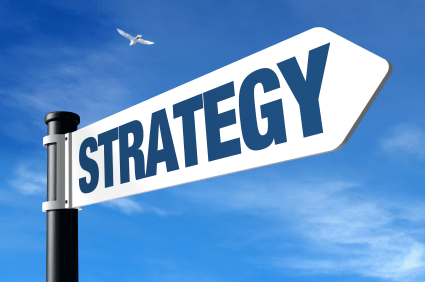They say it’s lonely at the top, but life at the bottom is not much better. When you think of life at the bottom perhaps it conjures up images of a diving Jacques Cousteau navigating through shipwrecks and sharks amidst the murkiness of the ocean floor.
In media buying there are definite parallels – the shipwreck might represent an advertiser’s business, a once powerful machine which has hit the rocks. This situation places added pressure on marketing budgets and attracts greater interest from procurement – hungry sharks who are hunting lower costs to help feed the business. These sharks attract other sharks – the trading heads and agency bosses who resort to unsustainable price promises to win or retain clients.
You could argue the push for lower media rates applies to all businesses but the truth is that a company that is suffering losses on the ASX is going to push much harder on cost than one who has just turned in a record profit. And in Australia, there are pressures on most industries: automotive, retail, FMCG, entertainment – all seeking greater returns with dwindling marketing spends.
It does however come at a price if lowest cost is the primary objective. Here I focus on three key players in the rate game, the advertiser, the media agency and the media owner and the impacts on each one.
The Advertiser:
Everyone feels good about themselves when they get something at a discount and advertisers are no different with their media investment. Paying a lower price than others for something is a good feeling and paying a lower price for something that others should be paying less for is even better!
So is the pursuit of lower costs in media a rational or emotional approach for advertisers? The rational approach is linked to transparency. By rights, if an advertiser invests a certain amount in a medium, they should receive a discount relative to that spend. The media used to have clear guidelines for this. You spend more with us, we will give you more of a discount. You win. We win. The ratecard structure was adhered to.
The emotional approach is quite different. Advertisers want to feel like they are getting a good deal and when benchmarking exercises reveal that others of a similar or lesser spend are getting a better discount, there is a tendency to feel taken advantage of. Another emotional driver is pressure – pressure from above to reduce cost wherever possible. After all, surely media is just another commodity?
Today, the ratecard is no longer relevant. Changing media consumption habits, a bigger focus from marketers on owned and earned channels and an ever fragmenting media landscape have seen bigger discounts come into play. This situation means that advertisers believe they are all capable of securing huge discounts regardless of spend. As a consequence it can become a primary driver in the selection of a media agency should an advertiser wish to see if they can get a better deal elsewhere.
However, a focus purely on cost can have the following drawbacks:
1) Cost will become the priority. It will be at the centre of everything you do and become your reputation. Media owners will become wary of someone that just wants to focus on cost as they seek to protect their yields. Agencies will struggle to deliver relevant reach in the long term and this can negate creative efforts. You may have great content but it will lack impact because media owners will not place it exactly where you want when they can make more money selling inventory to others on a lesser discount.
2) It can stifle strategy. A truly great strategy should have no boundaries but when strategic proposals from the media agency are knocked back for being too expensive, it gives the agency little incentive to keep putting ideas forward.
3) It can reduce access to talent. An agency wants their best people on every account but an account that is so heavily focused on price (and likely has KPIs linked to cost reductions) will see a lack of fresh ideas because all the best people are working on more profitable (and enjoyable) bits of business.
Media Agencies:
We are seeing a trend whereby media agencies have reduced the focus on buying clout and amplified the strategic, cultural and intellectual components of their business in an effort to win clients.
Much of this has to do with agencies needing to look at alternative revenue streams now that media spend and commission incentives are reducing, but it is heartening to see an admission that there is not a lot between them from a rate perspective.
And this is where the focus turns to value. Agencies need to continue their focus on this “race to the top” – a race where instead of murkiness, sharks and shipwrecks, there is something altogether more beneficial in helping a client’s business.
What agencies need to do when confronted with a cost dilemma is to be honest and explain the caveats that come with a focus just on price.
1) Compromising on quality. You may achieve your peak/off peak splits and your 1+ reach objectives but dig a little deeper and those low CPMs come with a catch. It is unlikely the shows you are appearing in consistently index highly against your demo or offer an acceptable position in break. Look even closer and that spot list may reflect a reliance on double spotting and bonus. Every media owner has premium and remnant inventory and your attitude to cost will determine where you are placed.
2) Missing out on new opportunities. It’s what every advertiser dreads – their competitor being integrated in the number one rating show and they were not offered the opportunity. No matter the medium, there is still a thirst for a media first. You want to be innovative, you want to be a disruptor and you want to be remembered. So how come you missed out on that new billboard installation or don’t have the client’s CEO as a guest judge on reality TV? The likelihood is the media went to sell this to someone who wouldn’t spend the next 6 weeks focusing on reducing cost over the value of the opportunity itself.
3) Calling in favours. It could be anything from having to pull your campaign outside of cancellation deadline or getting a right of reply to a negative story that’s airing on the news tonight or needing Grand Final tickets for your client. There will always be favours to be called and you are better placed to achieve these if you have a partnership with a media owner as opposed to a deep discount position with a media owner.
Media Owners:
Most media owners are loathe to reduce rates to an agency in an effort for them to win business unless there is a shift in marketing dollars towards their interests. But new business aside, these are tough times for most media owners as increases in owned and earned media affect their bottom line. They are constantly having conversations around cost each time negotiations come around. And yes they are justifiable when audience declines continue – but spend is also declining of course, so how do they find middle ground?
1) Innovation. This is often a key requirement from advertisers who are seeking more from their media investment. And with advances in technology and increased personalisation there is much to be gained by shifting the focus into new opportunities.
2) Data. Media owners are data owners – the bigger the audience, the bigger the data they own. There are increasing conversations about how to leverage this asset. The potential for fusing consumer, media and marketing data is a win for both sides.
3) A real focus on partnerships – there is a difference between a partnership and a commercial arrangement and that needs to be defined at the start of any negotiation. One way of working as a partnership is greater collaboration between agencies, advertisers and media owners and setting clear business objectives and identifying ways to achieve them. Cost alone will not be the answer.
It is easy to point the finger at the source of this race to the bottom at any of these parties. The media can be guilty of being inconsistent with what discounts and concessions advertisers are entitled to. The advertiser can be guilty of making outrageous demands to agencies and threatening to review if costs are not low enough. Meanwhile the agencies can be guilty of making outrageous promises to deliver these.
Perhaps the answer is for the players in the rate game to stop playing for their own side and join a unified team that agrees to prioritise the value component of an advertiser’s business. This approach would be more transparent and prove that a more strategic approach will deliver a more sustainable return on investment.







